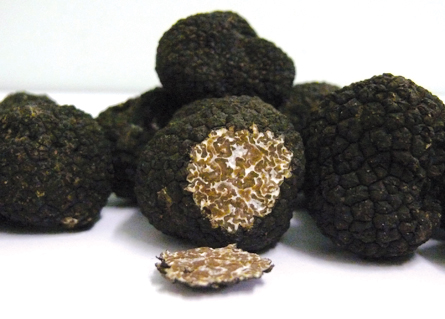Sniffing out truffle scent
Genetics, not geography, plays key role in the aroma of the delicacy
By Roberta Kwok

Chances are you haven’t eaten many truffles. Truffles are an aromatic, and some say delicious, part of a type of fungus that grows underground. Chefs consider truffles so valuable that a single pound of the prized food can cost thousands of dollars.
People have linked a truffle’s smell to its environment: the soil it grew in, the tree that nourished it or the weather. Now, scientists say that the secret to a truffle’s aroma is in its DNA, the genetic instructions inside cells that tell them which molecules to make. The findings could help people grow truffles on farms instead of the traditional harvesting method, digging for truffles in the wild.
“Truffles are a really valuable natural resource, and it’s the aroma that really gives them their value,” Gregory Bonito of Duke University told Science News. Bonito is an expert on how truffles evolve, or gradually change and diversify over time.
Fungi are organisms that absorb nutrition from their environment and in the process often help break down dead organisms. Truffle-forming fungi pair up with trees and grow threadlike filaments on the trees’ roots. Threads from different fungi then reproduce with each other and produce truffles, which usually resemble potato-like lumps. Harvesters dig up truffles after pigs and dogs sniff out their location underground.
Truffles produce many kinds of chemicals called volatile organic compounds, or volatiles. These are substances that easily change to a gaseous form. A truffle’s volatiles affect how it smells. But scientists have not been sure what controls the types or amounts of volatiles that a truffle makes.
Richard Splivallo at the University of Göttingen in Germany wanted to find out whether genetics played an important role in the scent. His team focused on a specific truffle called the Burgundy truffle, which grows in many places in Europe.
From 2008 to 2011, the researchers collected 223 Burgundy truffles from seven countries in Europe. Then the team figured out some of the volatiles each truffle produced and the concentration of each volatile. The scientists also analyzed DNA samples from the truffles.
Some truffles had different levels of volatiles despite growing in the same area. But truffles with similar DNA tended to make similar levels of the same volatiles. The results suggest that genetics plays a big part in controlling a truffle’s smell.
By understanding truffles better, people might eventually be able to grow more truffles on farms. But farming truffles won’t be easy. There’s still a lot we don’t know about these mysterious fungus bodies. “It’s like we’re back in the Stone Age,” Bonito told Science News.
POWER WORDS (adapted from the New Oxford American Dictionary)
fungus An organism that absorbs nutrition from its environment and often helps break down dead organisms.
truffle Part of a type of fungus that grows underground and is considered a valuable ingredient.
volatile organic compound A chemical that is often released as a gas from solids or liquids.
species A group of organisms with similar individuals. Humans are a species, dogs are a species, etc.







